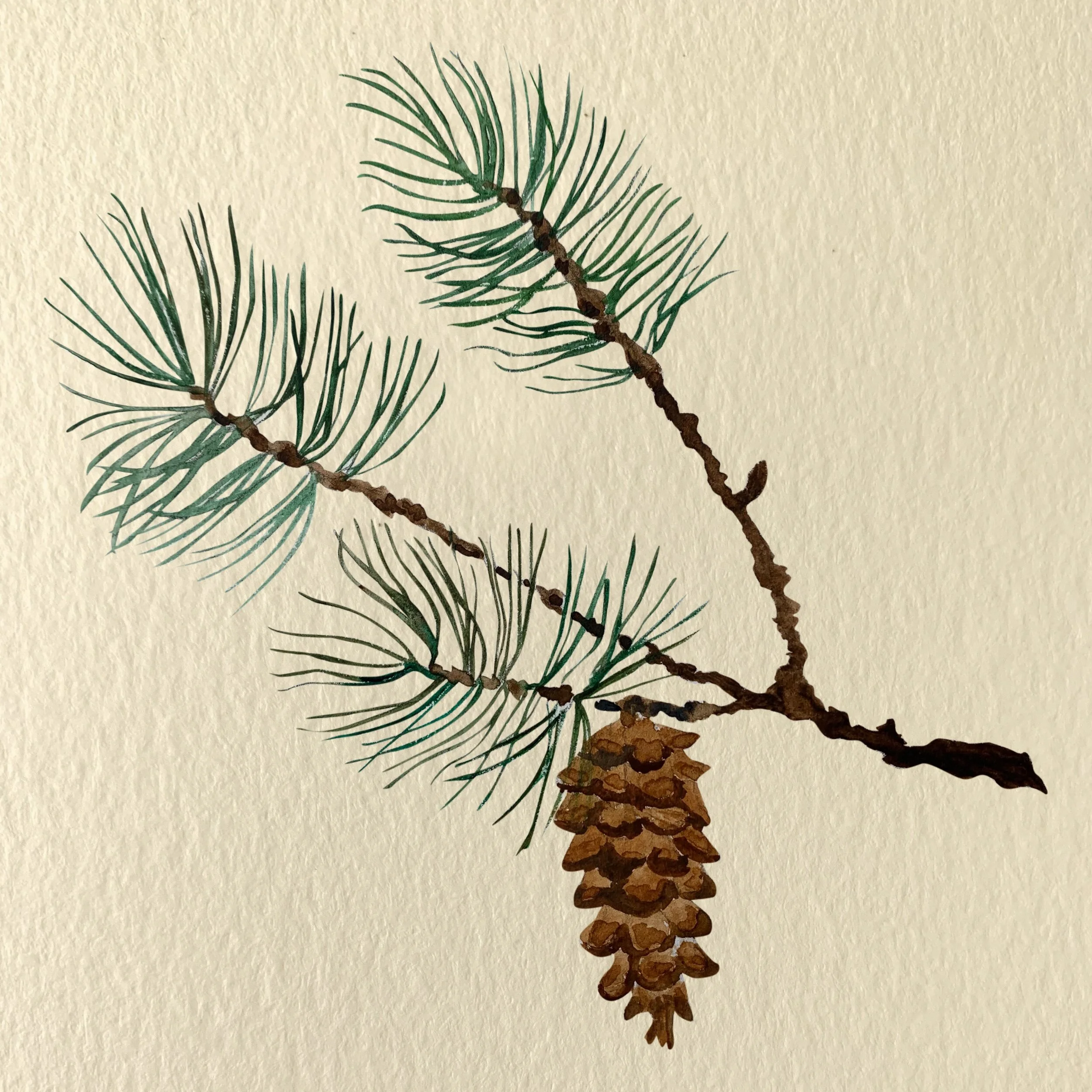Pinus strobus. Illustration by Michelle Enemark.
WHITE PINE
A great pine tree grew over the 1750s farmhouse where I lived when I first started studying plant medicine. Thus it was one of the first plants I ever got to know. I often would bring pine tea to potluck dinners and it is always a party favorite.
In these novel virus times, it feels good to have new daily rituals of protection, health, and strength. Filling your home with the antiseptic and healing oils of pine is one possibility.
Both pine tea and the steam are useful medicine for the respiratory system, for thinning and removing mucus from the lungs in either an acute illness or from the dry harshness of winter living.
WINTER PINE STEAM FOR THE HOME
HARVEST
I usually forage small fresh fallen branches for pine tea or steam. Inspect a fallen branch to see if the needles look green and healthy and you have yourself good medicine. I use both the needles and the small twigs. The needles of white pine grow in clusters of five, which helps with identification.
If for some reason there are no fallen branches, you may harvest the tips of the branches for needles and twigs. This may be done year round, any time the needles look healthy. But when it is very icy, snowy, and cold, I don't like to harvest at all directly from the tree. A small injury feels like a lot for even the greatest standing pine tree.
PREPARATION
Put the needles and smaller twigs into a pot. Cover with water, making sure there are several inches above the plant because it's going to cook down. Keep an eye on it and simmer all day! (Be sure to use a pot that you don't mind getting possible resin residue on!)
This is a lovely morning ritual for filling your home with great smelling antiseptic goodness each day. Rise early, have a warm breakfast, and set out with the rising sun to see what lovely branches might have fallen in the night...
PINE TEA
I like to simmer the needles and twigs for about twenty minutes, then let sit for a few hours before straining. The longer you brew, the more medicinal oils you'll get, and also the more bitterness. Pine needles are packed with Vitamin C which is heat sensitive, so I gently simmer and never bring to a boil. For a dry cough, one might add some moisturizing herbs like mullein or marshmallow.
Sometimes the twigs bring an extraordinary pink color to the tea. Magic!
OTHER MEDICINAL USES
White pine has many other medicinal uses and possibilities. People make infused honey, bath salts, and tinctures from the needles and twigs, and wound salves from the sap. The infused honey would be a quick and easy medicine to make and have on hand - fill a jar with cut up needles and cover with honey. Gently warm in water for a few hours and then keep on your shelf to add to tea or to have a spoonful now and then...
And then pine elixir (the needles seeped in bourbon & honey)... oh, I wonder how that might taste?
Blessins, friends.
*Disclaimer*
This material is intended for educational purposes only. This recipe does not provide specific dosage information, format recommendations, toxicity levels, or possible interactions with prescription drugs. Accordingly, this information should be used only under the direct supervision of a qualified health practitioner.

